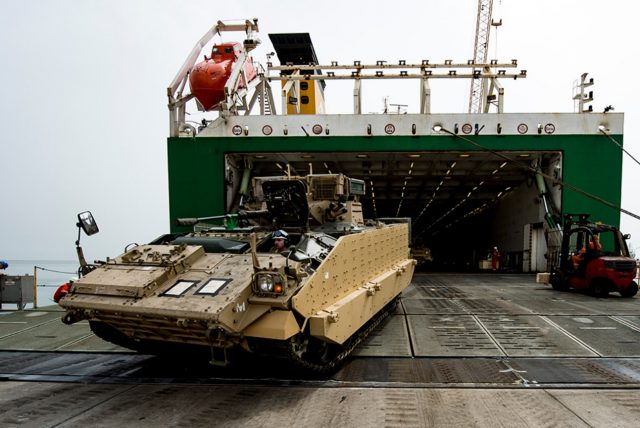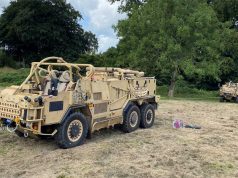The UK’s parliamentary Defence Committee has called the British Army’s armored fighting vehicle (AFV) capability “deplorable” in the opening lines of a report published on March 14.
The report was published ahead of the upcoming Integrated Security, Defence and Foreign Policy Review, which will, according to information that is slowly trickling to the press, introduce further cuts across all branches of UK armed forces.
The committee launched the review in July 2020 and included written submissions from the defense ministry, expert commentators, academic and the defense industry.
“This report reveals a woeful story of bureaucratic procrastination, military indecision, financial mismanagement and general ineptitude, which have continually bedevilled attempts to properly re-equip the British Army over the last two decades,” the opening words of the report say.
Since the end of the Cold War in the late 1980s, the Army’s AFV fleets have been characterized by increasing obsolescence and decreasing numbers. In 1990 the UK had around 1,200 main battle tanks in its inventory, today has 227, and those that remain are in urgent need of modernization.
The report highlights that between 1997 and late 2020 (with the exception of a small number or armored engineering and Viking protected mobility vehicles) the defense ministry has not delivered a single new armored vehicle from the core procurement program into operational service with the army.
Partly as a consequence of this failure, British Army personnel were inadequately protected on operations in Iraq and Afghanistan, and some of those currently on deployment in Estonia are equipped with lightly armored (for example the open-topped Jackal) or obsolescent (FV430 series) vehicles in the face of a significant potential peer threat from Russian forces, the report says.
What is more, the army’s Challenger 2 main battle tank and Warrior infantry fighting vehicle (IFV) have gone decades without upgrades. The 227 Challenger 2s currently in service did not receive significant upgrades since entering service in the 1990s. The report goes on to note that a planned but yet-to-be-approved life extension program for the tanks would deliver highly capable assets. However, as such program take up to 10 years to complete, the Challenger fleet would be approaching the end of its service life by the time the final tank completes LEP.
The report also touches upon the delay in fielding a “warfighting division”, which is still some four years away.
As a result, were the British Army to have to fight a peer adversary in Eastern Europe in the next few years, the soldiers “would be forced to go into battle in a combination of obsolescent or even obsolete armored vehicles, most of them at least 30 years old or more, with poor mechanical reliability, very heavily outgunned by more modern missile and artillery systems and chronically lacking in adequate air defense.”
“If the Integrated Review concludes that the defense ministry and army are to retain a heavy armored capability it is clear that they must learn the hard lessons from recent history,” the committee said.
“Furthermore, to support this capability the UK requires an industrial base. The current procurement and upgrade programs have led to new investment in skills and production facilities. To sustain this regrowth in what was a decaying sector, the defense ministry (and wider government) must provide greater certainty about future requirements and possible contracts. The proposal to develop a Land Industrial Strategy is a welcome step in this direction, the report, which you can read in its entirety here, said.



























